
In the early hours of Thursday morning this week (2am AEST to be exact), Google will kick off their 7th annual developer conference – Google I/O. The conference will see some 5000 in attendance – developers alongside general attendees and media – for two days. A number of sessions will cover a range of Google products and services, showing developers how to make their products and services better and explaining new features to those who will implement them in their products.
Opening the conference is of course the all-important Google I/O Keynote. This will be streamed live on YouTube and the Google I/O app. Straight after that, the developer sessions will commence. These sessions will also be available for anyone on YouTube, but they’ll be uploaded to the Google Developers YouTube channel after the session. You can find the full list of sessions on the Google I/O event schedule, but we’ve also gone through the schedule to see what we can glean from it.
At a lower level, in terms of actual announcements and new features, what are we hoping to see, and what is likely to come?
Search and Cloud
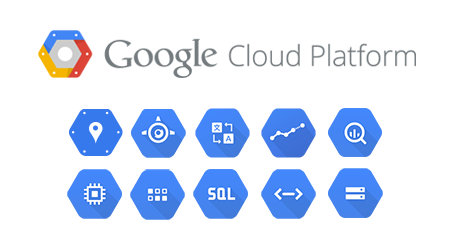
Google is first and foremost a search company, making a lot of its money by incorporating advertising into search. It’s not sexy, so don’t expect to see much in the way of announcements at the Keynote for Search, or AdMob. These products are well established, fairly advanced, and perform well for Google; there’s unlikely to be huge innovations here.
That being said, last year’s Google I/O conference saw a fantastic presentation demonstrating Google’s integration of voice into its traditional search product, so we’re willing to be surprised.
Google tends to launch Search updates at multiple times throughout the year, making updates to their algorithm (currently known as Penguin) and releasing them relatively quietly. Fear not, though – we usually find out about these updates soon after they come out, and report on them when there’s interesting developments that affect your Android experience.
There are a number of sessions scheduled around AdMob, Search and Cloud, with an especially large number of sessions devoted to ‘Cloud’ – not surprising, given the reliance many Google services have on a server-client architecture. Here they are, with the headline subjects:
AdMob
- AdMob and Google Analytics Office Hours
Search
- Sourcegraph: A code search engine in Go
- The Future of Apps and Search
Cloud
- Open-source technologies form the Hadoop ecosystem as part of your Cloud toolkit
- Predicting the future in the Cloud
- Developer workflow around Docker Containers
- DevOps power tools
- Containers on Google App Engine
- Large scale data processing in the Cloud
- Making our cloud apps Google-fast
- Massively scalable backends for MMO and mobile games
- Zero to hero with Google Cloud Platform
- Unlocking the potential of Google Analytics logs using Google BigData
- Scaling NoSQL performance on Google Cloud Platform
- Building a Lambda Architecture in 10 minutes with BigQuery, CEP and Docker
- Connecting Cloud and Web: Deploying end-to-end apps with Dart
- Achieving more with Mobile Cloud
- Big data, the Cloud way: Accelerated and simplified
- Continuous integration with Google Cloud Release Pipelines
- BigQuery Logs analytics
- Containerizing the Cloud with Docker on Google Cloud Platform
- Building end-to-end apps with Cloud, Mobile, and Dart
- Putting out fires in your production application
- Predicting the future in the Cloud
- Server-side Dart programming in Google Cloud
- Building mobile picture-messaging apps with Dart, Polymer, and Cloud
- Taming your cloud applications with intelligent monitoring
- Continuous integration with Google Cloud Release Pipelines
- Accessing Cloud Datastore from Dart
- Predicting the future with Google Cloud Platform
It’s pretty in-depth stuff that’s mostly going to be of interest to developers rather than the general public. The best thing to take away from these low-level developer and integration sessions is what it will eventually offer the end user — faster, more powerful web and mobile applications, and more portability and interoperability in data.
Android
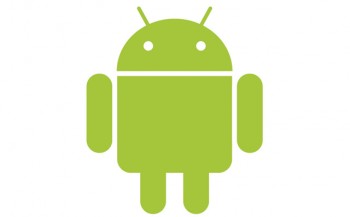
Android is always one of the ‘sexy’ topics that people look forward to, and this is particularly true of the opening keynote presentation. Last year, we saw a few things announced – Google Play Music All Access, Google Play Games, Google Play for Education (which still hasn’t come out anywhere outside the US) and finally, an early version of Android Studio (the updated Android development environment, replacing Eclipse) was released. There was also a particular emphasis placed on Google Play Services and how it would be used to bring Google Play Games to older devices still waiting for software updates, bringing that particular piece of software very much into the spotlight.
It’s possible we’ll see a point release in Android at Google I/O – perhaps an advance to version Android 4.5 while retaining the “KitKat” designation (as was done twice with Jelly Bean), given the velocity with which Android OS versions have advanced in recent years. There are rumours that we’ll see the next version of Android – version 5.0, also dubbed the ‘L release’ (Lollipop, or Lamington?) but it seems more likely that this will be held off till the end of the year for a new Nexus phone, maybe around October/November.
Even without a major update, we will almost certainly see some new features announced, again likely to be delivered via an update to Play Services. The rumour mill has been fairly quiet, but we’ve still heard a few murmurs.
What we do know is that, thanks to recent Android Open Source Project (AOSP) commits, Android will be dropping Dalvik in favour of ART as a runtime. What we don’t know about this is the timeframe in which the change will occur – ART hasn’t had the smoothest of introductions to the Android community with a number of app compatibility issues found over the last year, but Google has improved their new runtime in leaps and bounds. Maybe ART is ready for the big time…
We may also see introduction of support for 64-bit ARM processors, which we’ve already seen announced in February by Intel and soon after by Qualcomm, with products due to launch within the next 12 months. This again is further supported by recent commits to AOSP adding 64-bit support as well as new a new API naming convention.
We expect to see further evolution of development tools and environments. Hopefully Android Studio will get some more love this year, but it was only recently updated to version 0.6.1 a little over a week ago so we probably won’t see a 1.0 release yet. Eclipse still seems to be the development environment of choice, though I’m sure real developers will have their own opinions about the two development environments.
Another possibility is Google Fit, rumoured a week ago. This of course ties in with Android Wear, with the fitness-focused service bringing together a combination of hardware in fitness trackers and software in phones and other wearables.
As this is Google I/O, there will be a lot of Android-focused sessions for developers – Android is of course, a major focus:
Android
- Android and Cloud
- Framework for device storage and SD Cards
- What’s New in Android
- Android power performance primer
- Android Custom Views
- Android Fireside chat
- Android accessibility updates
- Introduction to Android accessibility
- Frameworks for enterprise and device management
- SDK Tools for performance
- Unity Tools and performance
- Camlistore: Android, ARM, AppEngine, everywhere
- Introduction to Android accessibility
- SDK tools for layouts
- GC and Jank in ART
- Building App Engine with Gradle in Android Studio
- What’s new in Android development tools
- Renderscript
- Less code, more services, better Android Apps
- Advanced Android UI
- Graphical Android: Rich effects for great user interfaces
- Building great multi-media experiences on Android
Google Play
- Keys to successful distribution of Android Games
- Google Play power session
- Google Play Office Hours
- Google Play Services Rock
Android-Specific Hardware
ARM is the overarching hardware platform that manufacturers build their processors on, and ARM themselves will be doing a session called:
- ARM tooling and performance
There are also sessions being presented by three of the major Android ARM processor manufacturers – NVidia, Qualcomm and Intel:
- NVidia tooling and performance
- Intel tooling and performance
- Qualcomm tooling and performance
As you can see, there’s no mention of MediaTek, which probably puts the nail in the coffin of a rumoured MediaTek based sub-$100 Nexus phone.
Android Wear

Android Wear will be a big focus at Google I/O. After announcing Android Wear back in March, we haven’t seen much movement. Many – including us – are expecting more to be revealed at I/O.
Hardware-wise, there are two devices announced so far – the Moto 360 and LG’s G Watch. Another device (an as yet unnamed device from Samsung) is also rumoured to launch at I/O.
At the initial launch, Google named Asus, HTC, LG, Motorola and Samsung as partners, so we could also see something up the sleeves of Asus and HTC as well.
The reference device for Android Wear is rumoured to be the LG G Watch, also rumoured be given to developers in attendance to encourage development for the nascent platform. It should be noted however that Chris is keeping his hopes up for a Moto 360 launch and availability!
Android Wear
- Android Wear: The Developer’s Perspective
The other weapon in Google’s wearable arsenal is of course Google Glass. There’s been a slew of updates for Glass, with the major update of course was the upgrade of the Glass platform to KitKat back in April. It’s possible that Google will look to bring Glass in under the Android Wear name.
Google recently made Glass – now on its second hardware iteration, but still bearing the ‘Explorer’ moniker – available to all US and UK residents, but at USD $1500 + taxes or £1000 it’s still a very expensive option. Given the ageing base hardware in Glass Explorer units, we’re hoping to see a new hardware revision see the light of day at I/O, but it does feel like something that would warrant its own event.
With the Explorer program now over 12 months old, it’s time that Google lets this particular horse out of the stable. The product has had our interest piqued for a long time now, so we’ll be watching to see what happens.
There’s wearable-specific developer sessions, which could address both Glass and Android Wear development, as well as Glass-specific sessions:
Wearables
These sessions may cover both Android Wear and Glass
- Wearable Computing with Google
- Designing for Wearables
Glass
- Glassware Design Sprint
- Distributing your Glassware
- Innovate with the Glass Platform
ATAP – Advanced Technology and Projects
Google’s ATAP division has three major projects on the go – Loon, delivering internet connectivity via weather balloons (recently spotted over Australia); Ara – aiming to deliver an affordable smartphone with modular upgradeable components; and Tango – a phone with 3D-mapping sensors built in designed to “give mobile devices a human-scale understanding of space and motion”, with a tablet version recently announced.
Of the three, it seems that Tango is the main project with a detailed presence on google.com, and Ara has been fairly quiet in recent weeks.
ATAP projects seem to move to their own timetable, so while we might see mention of these projects during the keynote presentation, don’t expect much by way of new information.
Android TV and Chromecast
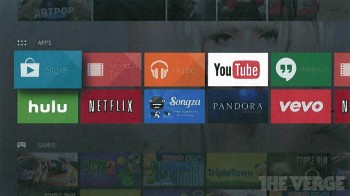
Since Google announced Google TV back in October 2010, it’s been trying to gain a foothold in one of the most-used rooms in the house: the living room. Google TV failed to really gain traction, and the company’s infamous Nexus Q never even made it into wide release. Don’t be fooled, though – Google definitely has plans for the living room. The Chromecast came out of nowhere last year to worldwide attention and success and it looks like Google is set to continue this push with Android TV.
Android TV first showed up in April this year with an idea of what to expect from the interface. In May, a follow-up article further speculated on the form that Android TV will take, pointing to it being less of a product and more of a platform for TV/STB (set-top box) makers.
Android TV would apparently sit at the higher-end of the scale compared to Chromecast, in terms of functionality and price. It would include Chromecast support as well as some form of gaming capability (or as was described, ‘an Ouya done right’). What’s missing however, are sessions on the schedule dedicated to Android TV. This could point to the project not really being ready for launch.
Chromecast figures highly into Google’s plans, however. With international launches finally happening in the first half of 2014 and an increasing number of the devices making their way into homes it’s not surprising to see a number of sessions available for developers at I/O about “Casting”, the protocol and API behind the Chromecast.
Cast
- Enable ‘Cast’ for your application
- Designing for Google Cast
- Casting to the future
- Making Google Cast Apps Discoverable
Nexus vs Android Silver
If you’re holding out to see if Google I/O will bring a new Nexus device, the news is not looking good. Google hasn’t been very good in recent years at keeping Nexus phones and tablets under wraps, and to date, literally nothing has been leaked that looks ready for launch.
There is of course the possibility that Google can pull a Nexus Q on us and launch a product they’ve developed in secret, but it’s not likely. The only thing we may get is clarification on the future of the Nexus program and perhaps an announcement of the much-rumoured Android Silver program, although none of us at Ausdroid are really expecting Android Silver to dethrone the Nexus at this stage.
Google Automotive Link (GAL)

At CES in January, Google announced the Open Automotive Alliance, a bid to take Android into the car. The alliance is a partnership with manufacturers Audi, GM, Honda, and Hyundai as well as NVidia for the processor side of things. The system acts as a projection of Android into the car’s audio/visual entertainment system.
We’ve heard absolutely nothing since. A recent report from AutoNews named the system as Google Automotive Link and advised that we would see more information at Google I/O.
The news isn’t looking good on this front either – there’s no developer sessions scheduled. Perhaps we’ll see something in their autonomous vehicles? Pie in the sky stuff.
Chrome and ChromeOS
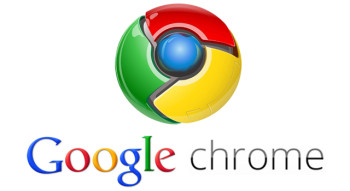
As the most popular web browser in the world, Chrome sees continuous updates across their four main channels (Canary, Dev, Beta and Stable). ChromeOS also sees these updates on average every 6 weeks. With that in mind, there’s most likely not going to be a huge amount of new features launched at I/O, and given that Google recently announced a slew of new Chromebooks at an Intel event, there’s not likely to be any hardware launches either.
That said, there’s almost surely one product we’ll see – Google Stars. This is a new take on how we store, organise and share our bookmarks and it already leaked last month, looking as though it was ready for primetime.
With the ChromeOS halo product (the Chromebook Pixel now 18 months old, the possibility of an update to that product has many ‘Chromies’ salivating. Google I/O would be the perfect platform to introduce the successor to the Chromebook Pixel, or perhaps a new form-factor – the ChromeOS tablet.
Development for Chrome – and, with recent increases in visibility availability and usage, ChromeOS – is a big part of Google’s bid to have customers use their services to access the web. As such, there’s a plethora of Chrome-based developer sessions:
- Jank-free performance Audits
- Accessibility developer tools in Chrome
- The power tools of Chrome DevTools
- 10 things I learned from the Chrome OS source
- Build for the multi-device Web
- How we bult Chrome Dev Editor with the Chrome platform
- Optimising for the user experience with WebPagetest
- Optimising the mobile experience with PageSpeed insights
- Request quest: Test your knowledge of obscure browser behaviour
- 5 Chrome DevTool tricks for a faster mobile website
- Mobile Dart workflows in Chrome Dev Editor
- Your first look at Polymer
- Best practices and common mistakes in SEO
Maps

Google Maps is one of the best mapping solutions available, but there’s other players in the market. Nokia’s Here Maps runs a close second and of course one of the newest entrants to the market – Apple – is snapping at everyone’s heels (even if it might not always know where exactly they can be found). With money to throw at their maps platform, Apple’s offering has improved in leaps and bounds and Google should be wary of it. Last year, Maps was a huge component of the I/O keynote presentation – expect to see more from Google on this front in 2014.
While they only just announced their purchase of satellite imaging firm Skybox, a $500 million dollar purchase doesn’t happen overnight – it’s possible we could see some early indications of what this purchase may bring.
- The View from Everywhere
- Maps for good
- Redesigning Google Maps
Watch Google I/O Live
While I/O is a developers conference, the opening keynote is a slick presentation delivered with the intention of wowing the gathered media and making waves around the world. Developers then learn more about the announcements at the sessions over the following two days. It’ll bring the most exciting announcements of the conference.
The keynote will be streamed live from the Google YouTube account. You can use Chromecast to watch it on your TV, thanks to the recent addition of YouTube live streaming support, and you can view it on your mobile using the Google I/O Android App.
Join us at 2am AEST on Thursday morning to see what happens!
What are you hoping to see at Google I/O 2014? Tell us your hopes, dreams and predictions in the comments!

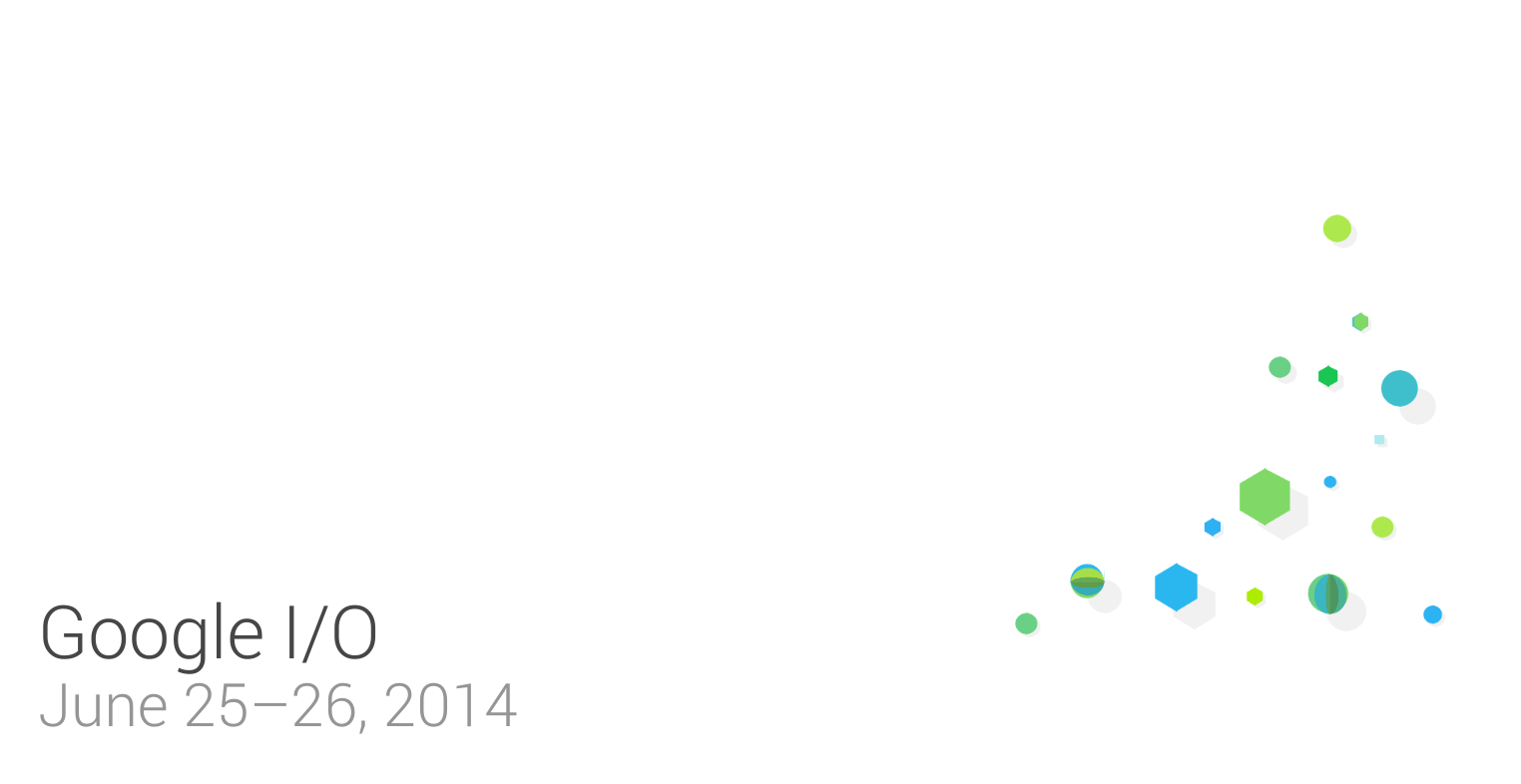



I’m pretty sure Android 5.0 will be announced. They have already teased at it: @google tweeted this: https://twitter.com/google/status/476786466790440960 Note the time 😉 As you know they tease the version with the time on the devices.
Also, I can only assume there will be more information about Google Domains just announced this morning!
In some ways I’m not looking forward to 4.5/5.0. The performance of my Nexus 4 has been getting worse and worse with every Kit Kat point release…unless they manage to miraculously fix that.
This year will be interesting. Seems like a big focus on wearables and probably glass. Last year had a bunch of app updates IIRC.
I’m personally more interested in Android, but doubt there’ll be any news on the Nexus 8/9, the L release or the Android Silver program. Would be nice if they gave some info about Nexus line or the next release of Android.
Haha that is what I thought when I heard the YouTube live streams could be viewed on ChromeCast. Google IO! 😀
I just want the Nexus line of products to be clarified.